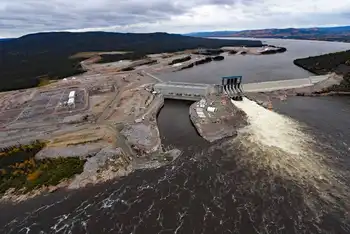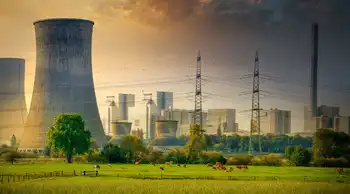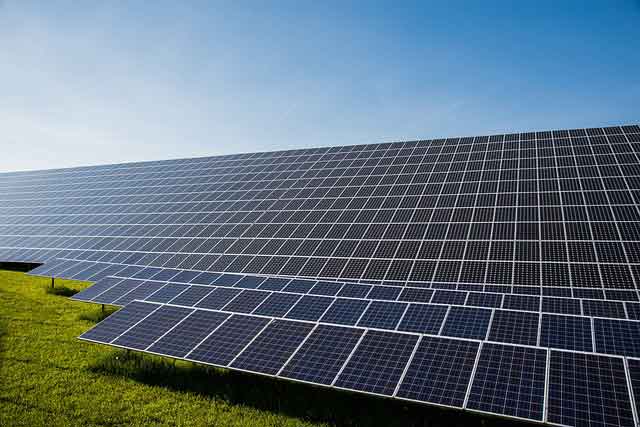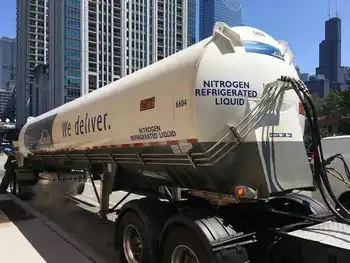Canada's heavy-water reactors can run on spent fuel from most light-water reactors
By Toronto Star
CSA Z463 Electrical Maintenance
Our customized live online or in‑person group training can be delivered to your staff at your location.

- Live Online
- 6 hours Instructor-led
- Group Training Available
Nobody sees this more than Myung Seung Yang of South Korea's atomic energy institute. Yang and his fellow nuclear scientists have spent the past 15 years exploring ways of using Candu reactors to recycle highly radioactive waste, or "spent fuel," from a majority of the world's nuclear reactors.
The approach, Yang wrote in an email message to the Star, "would have many benefits when practically implemented." South Korea is determined to try.
It's little known – at least outside the nuclear power industry – that the heavy-water reactor technology that lies at the heart of Candu's design can, with some technical tinkering, directly use waste fuel from most rival light-water reactors.
Candu developer Atomic Energy of Canada Ltd. calls this the DUPIC process – standing for the Direct Use of Spent Pressurized Water Reactor Fuel in Candus. In 1991, the Canadian government established a joint research program with the Korean Atomic Energy Research Institute to investigate the approach, and both sides have demonstrated that it technically works.
The long-term implications, if DUPIC processing can be done safely and economically, are potentially enormous. There are hundreds of pressurized light-water reactors (PWRs) around the world being used to generate electricity and propel submarines and aircraft carriers.
In the United States alone, two-thirds of the 104 reactors in operation are based on PWR designs, according to the U.S. Energy Information Administration. This has led over the years to the accumulation of 36,000 metric tonnes of spent fuel, which is kept in temporary storage at dozens of locations until a safe permanent-storage site can be found.
With DUPIC processing, that waste can be turned into a reusable fuel. This can significantly reduce a country's dependence on uranium, which many analysts predict will rise above $100 (U.S.) per pound by the end of next year – a tenfold price increase since January 2001.
Perhaps most important, the spent light-water fuel that eventually comes out of a Candu reactor will contain less toxic material than the fuel that goes in, shrinking the amount of radioactive waste that must ultimately go into long-term storage.
"The DUPIC fuel cycle could reduce a country's need for used PWR fuel disposal by 70 per cent while reducing fresh uranium requirements by 30 per cent," according to the World Nuclear Association.
It's for this reason South Korea is keen on the DUPIC process. It currently has 20 operating reactors – 16 PWRs and four Candus. Another eight PWRs are on order or being built. It sees the reuse of spent fuel in Candus as a key strategy for managing radioactive waste.
"The accumulation of spent fuel is an urgent issue that should be resolved," Yang and his colleagues wrote in a briefing document that was presented at the 15th Pacific Nuclear Conference in Australia last October. They called the eventual commercial development of the DUPIC process "an extremely important turning point in the history of nuclear power development."
David Torgerson, chief technology officer and senior vice-president of Atomic Energy of Canada, says the way uranium resources are used by power generators is driven by cost and supply. During the 1990s, for example, uranium prices were so low that it made more economic sense to just use it once and then stick the spent fuels in wet or dry storage.
But some countries don't have their own uranium resources, leaving them dependent on imports from other, potentially hostile jurisdictions. As uranium prices rise, the economics of the once-through fuel cycle also become less appealing when measured against the costs of waste management and disposal.
"As the nuclear renaissance takes off and more reactors are built, it's likely the price of uranium will increase (even more), and people will be looking at ways of getting more value out of that uranium," says Torgerson.
"Any time you can convert a waste into an asset, then you're going in the right direction."
He's quick to point out that the DUPIC process is also "proliferation resistant," meaning there is no chemical separation of the spent uranium's more dangerous components, primarily plutonium, which could be used by extremists or rogue nations to produce nuclear weapons. Only mechanical processing is required to change the shape of the spent fuel rods into shorter Candu rods.
Mechanical reprocessing, while it has some safety and transportation issues, could be cheaper than conventional chemical reprocessing.
"Because this is so much simpler, you have to expect the economics are going to be so much better," says Torgerson, pointing out that the South Koreans studied the economics of the DUPIC fuel cycle in the 1990s and found it could compete against other fuel options. "This is one of the characteristics we're certainly pushing."
For countries such as China, which already have Candu reactors in their fleet, it's an approach that could prove attractive. AECL estimates that waste fuel from three light-water reactors would be enough to fuel one Candu.
Daune Bratt, a political science instructor and expert on Canadian nuclear policy at Calgary's Mount Royal College, says he can envision two revenue streams going to Candu operators that choose to embrace the DUPIC process.
One stream would be the revenue that comes in through the generation and sale of electricity; the other would come from a tipping fee that operators of light-water reactors would pay to unload their spent fuel.
"These (Candu) operators wouldn't be buying the spent fuel, they'd be paid to use the spent fuel for environmental reasons," says Bratt. "If you can minimize the waste, you bring tremendous value."
The economic incentive could even be enough to convince China and other countries with light-water reactors to consider building new Candu reactors as part of a waste-management strategy. The approach, however, is not without its risks.
First, a DUPIC processing facility would need to be built to safely receive and store the spent fuel, mechanically process and reshape it and then send it off to a Candu customer. The fuel, throughout the whole process, remains hot and highly radioactive. Special equipment, procedures and reactor modifications would be required to handle the material, and safety systems would need to be reassessed.
This is the main reason why South Korea's biggest utility, Korean Electric Power Corp., has been somewhat skeptical of the DUPIC option. It fears, most of all, that workers who load the hot fuel into Candu reactors could expose themselves to high levels of radiation.
Another major concern is moving the fuel between different locations. As one former executive at AECL put it: "Transporting spent fuel is a political nightmare." It's risky enough transporting such material between reactor sites within a country, but the possibility of moving material between neighbouring countries adds a new dimension to the problem.
Canada, for example, could theoretically strike a deal that would see light-water fuel waste from the U.S. burned in Candu reactors in Ontario, Quebec and New Brunswick. Such an arrangement would not only eliminate the need for natural uranium fuel in Canada, but would represent a major revenue stream for Canada while limiting the growth of waste stockpiles in North America.
"The bigger deal is the possibility of traffic accidents," says Bratt. "What you need to do is design storage trucks where there isn't spilled waste if it rolls over." But agreeing to such a deal would be political suicide, he concedes. "I can just imagine the protests at the border crossing in Windsor."
In cases where a Candu reactor is built to handle light-water waste, the best approach would be to cluster the reactors in the same location and construct a DUPIC facility on site to limit transportation.
The potential of the DUPIC process raises the question of whether Ontario should get in the game and develop an expertise it can export around the world. Doing so, however, would mean building a PWR light-water reactor in Candu country – yet another political hot potato.
"In Canada, there would be both money to be made and a good environmental case to be put for a two-technology-plus-fuel-recycling model, if someone decided to see this as an opportunity, not a threat," says one nuclear-industry executive who asked not to be named.
France's Areva SA, Westinghouse Electric Co. and General Electric Co. all produce PWR light-water reactors and all want to build one in Ontario, which said last year it will consider foreign designs in pursing any new reactor builds.
Armand Laferrere, president of Areva Canada, has argued that Ontario could diversify its engineering skills base if it built a new nuclear plant based on a foreign design. By coupling such a plant with a DUPIC processing facility, the province could develop a nuclear waste management technology that could be sold globally in an international market dominated by light-water reactors.
Some have even suggested that a company such as Areva, if it purchased all or part of AECL's commercial business, could sell hybrid light- and heavy-water reactor fleets along with DUPIC processing in fast-growing markets such as China.
But Bratt dismisses the possibility. "Ontario is not a big enough market to run two different parallel systems. Shifting systems would be an incredible risk both short and long term," he says.
"The more conservative route – and not necessarily the better route – is to maintain the Candu system. So I would be stunned if Ontario went with another design."
Which leaves all eyes on South Korea, the only jurisdiction with both Candu and PWR reactors that considers the commercial development of DUPIC a fruitful – albeit challenging – endeavour.











